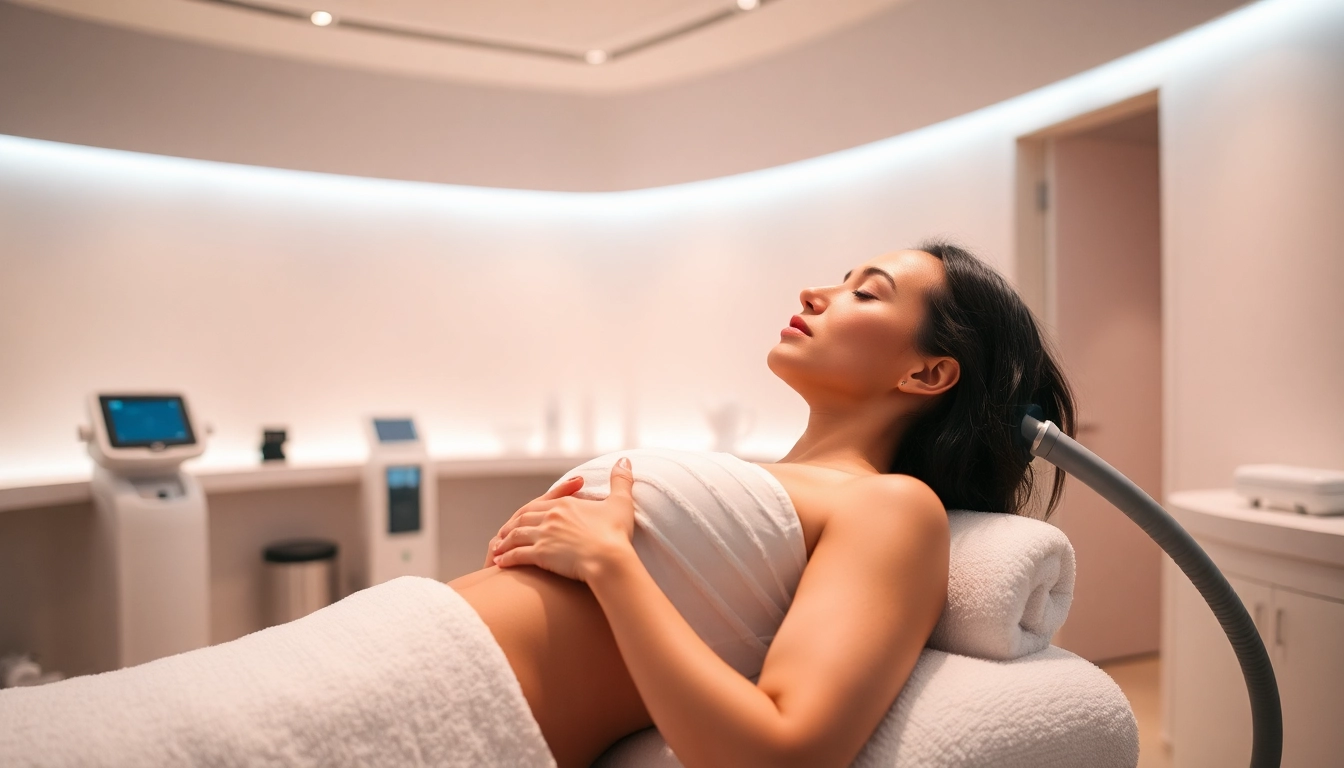Understanding Body Sculpting
What is Body Sculpting?
Body sculpting, often referred to as body contouring, is a set of procedures or techniques designed to change the shape and appearance of specific areas of the body. Unlike traditional weight loss methods that focus primarily on reducing overall body mass, body sculpting techniques aim to enhance body aesthetics, focusing on specific areas where stubborn fat or excess skin may be present. These procedures can involve surgical approaches, such as liposuction, or non-invasive techniques that use various technologies to target fat and improve muscle definition. As an example, many clinics offer services that utilize body sculpting technologies aiming to provide cosmetic enhancements with minimal downtime.
Types of Body Sculpting Procedures
Body sculpting techniques can be broadly categorized into two categories: surgical and non-surgical options.
- Surgical Procedures: These typically involve invasive techniques and are performed by licensed plastic surgeons. Common surgical body sculpting methods include:
- Liposuction: A technique that removes fat through suction.
- Tummy Tuck (Abdominoplasty): Removes excess skin and fat from the abdominal area.
- Body Lift: Reshapes and lifts the body by removing sagging skin.
- Non-Surgical Procedures: These options have gained popularity due to their non-invasive nature and shorter recovery times. They include:
- CoolSculpting: A fat-freezing technique that destroys fat cells.
- EMSCULPT: Uses high-intensity focused electromagnetic energy to build muscle and reduce fat simultaneously.
- Radiofrequency Treatments: Such as SculpSure and Vanquish, which heat fat cells and promote their destruction.
Benefits of Body Contouring Techniques
Body sculpting offers a multitude of benefits, making it an appealing choice for many individuals looking to improve their physical appearance:
- Selectivity: Procedures can be customized to target specific areas, addressing issues like love handles, loose skin, or abdominal bulges.
- Improved Self-Esteem: Many individuals report a boost in confidence and self-image post-procedure, as body sculpting can often yield dramatic results.
- Body Shape Enhancement: These treatments can redefine and enhance natural body contours, which is especially beneficial after significant weight loss.
- Minimal Downtime: Non-surgical methods often allow for quicker recovery, enabling patients to return to their normal routines promptly.
The Body Sculpting Process
Consultation and Assessment
The journey to body sculpting begins with a comprehensive consultation, where a qualified professional assesses the individual’s specific needs and concerns. This assessment typically includes:
- Medical History Review: Understanding any underlying health conditions that may affect the procedure.
- Physical Examination: Evaluating the areas to be sculpted and discussing realistic outcomes.
- Setting Expectations: It’s vital to discuss the expected results, potential risks, and recovery time to ensure patients make informed decisions.
Preparing for Your Body Sculpting Treatment
Preparation for body sculpting procedures varies depending on the specific treatment plan. Key steps often include:
- Pre-Procedure Guidelines: Patients may be advised to avoid certain medications, supplements, and smoking to lower the risk of complications.
- Diet and Hydration: Maintaining a healthy diet and staying hydrated can promote better healing post-procedure.
- Setting Realistic Goals: Define achievable outcomes based on the consultation and identify personalized goals for the treatment.
What to Expect During the Procedure
Depending on the chosen body sculpting method, patients can expect varying experiences:
- Duration: Non-surgical methods may take 30 to 60 minutes, while surgical options tend to require longer timeframes.
- Anesthesia Use: Non-invasive methods typically require little to no anesthesia, while surgical options may necessitate general anesthesia or sedation.
- Post-Procedure Instructions: Patients will receive guidelines for care following their procedure, which are vital for optimal recovery.
Post-Procedure Care and Recovery
Immediate Aftercare Tips
After undergoing body sculpting, patients should follow specific aftercare instructions to support healing. Key recommendations include:
- Follow Up Appointments: Attending scheduled check-ups to monitor healing and results.
- Manage Discomfort: Using prescribed pain management techniques and medications as needed.
- Avoid Strenuous Activities: Limiting activities such as vigorous exercise to allow the body to recover properly.
Long-term Maintenance for Optimal Results
To maintain the results achieved through body sculpting, individuals should adopt long-term lifestyle changes, including:
- Regular Exercise: Engaging in a balanced fitness regimen tailored to enhance and maintain sculpted areas.
- Healthy Eating: Following a nutritious diet to prevent weight fluctuations that could affect the results.
- Skin Care Routines: Utilizing products that support skin elasticity and health to enhance appearance.
Common Recovery Questions
Patients often have several questions about recovery, including:
- How long is recovery time? Recovery timelines can vary widely based on the procedure; non-surgical methods typically require minimal downtime, while surgical options may involve several weeks.
- Are results permanent? While many methods offer long-lasting results, maintaining a stable weight and healthy lifestyle is crucial to prolonging effects.
- What if I want more enhancement later? It is possible to undergo additional procedures as long as the timing and health conditions allow, and any treatments are discussed with professionals.
Comparative Analysis of Body Sculpting Methods
Surgical vs. Non-Surgical Options
Both surgical and non-surgical body sculpting options come with their own sets of advantages and disadvantages. Surgical methods may offer more dramatic results but often come with extended recovery times and higher costs. Non-surgical options, while less invasive, may necessitate multiple sessions for desired outcomes. Ultimately, a consultation with a cosmetic professional can help determine the most appropriate route based on individual goals and health conditions.
Cost Comparisons and Financial Considerations
The cost of body sculpting varies widely based on several factors:
- Type of Procedure: Surgical options, like a tummy tuck, can range from $6,000 to $12,000, while non-surgical options might start around $1,500 per session.
- Location: Pricing can differ depending on the clinic’s location, with urban centers often charging more than smaller towns.
- Packages and Deals: Many clinics offer combination deals or package pricing for multiple sessions to make treatments more affordable.
Patient Testimonials and Satisfaction Rates
Surveyed satisfaction rates reveal that many body sculpting patients express high levels of satisfaction—Inevitably, personal experiences can be subjective. However, testimonials commonly cite enhanced confidence and satisfaction with their body post-treatment. Consulting several reviews and discussion forums can provide invaluable insights into what potential patients can expect.
Future Trends in Body Sculpting
Innovations in Body Sculpting Technology
The field of body sculpting is continually evolving, with new technologies emerging frequently. Innovations such as:
- 3D Body Imaging: Enhances personalized treatment plans by allowing for more accurate assessments of body contours.
- Artificial Intelligence: AI is set to increasingly influence consultations, helping practitioners make informed recommendations based on data analysis.
- Improved Equipment: Newer devices offer faster treatment times, reduced discomfort, and greater efficacy, expanding patient options.
Emerging Treatments to Watch
Several treatments are gaining attention as methods to watch for future innovations:
- Combination Therapies: The trend towards using multiple techniques, such as combining radiofrequency with fat freezing, is growing.
- Natural Treatments: More individuals lean towards natural and holistic treatments that focus on health and wellness alongside aesthetic goals.
Expert Insights on the Future of Body Contouring
Industry experts predict that body sculpting will further integrate technologies for unprecedented precision in results. Ongoing research may also lead to new techniques that prioritize patient comfort and recovery. As the field grows, patients may also experience a broader choice of personalized treatment plans tailored to their unique bodies and aspirations.



